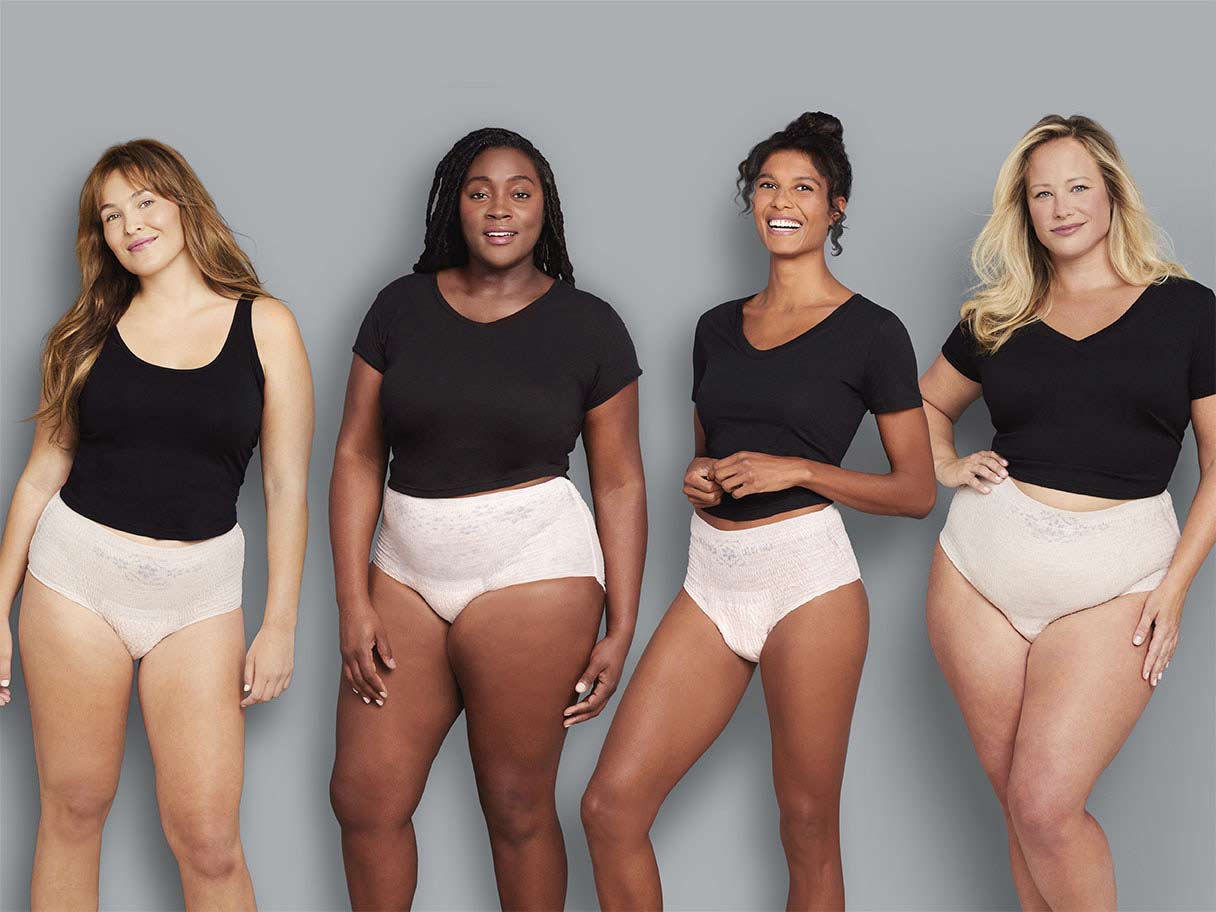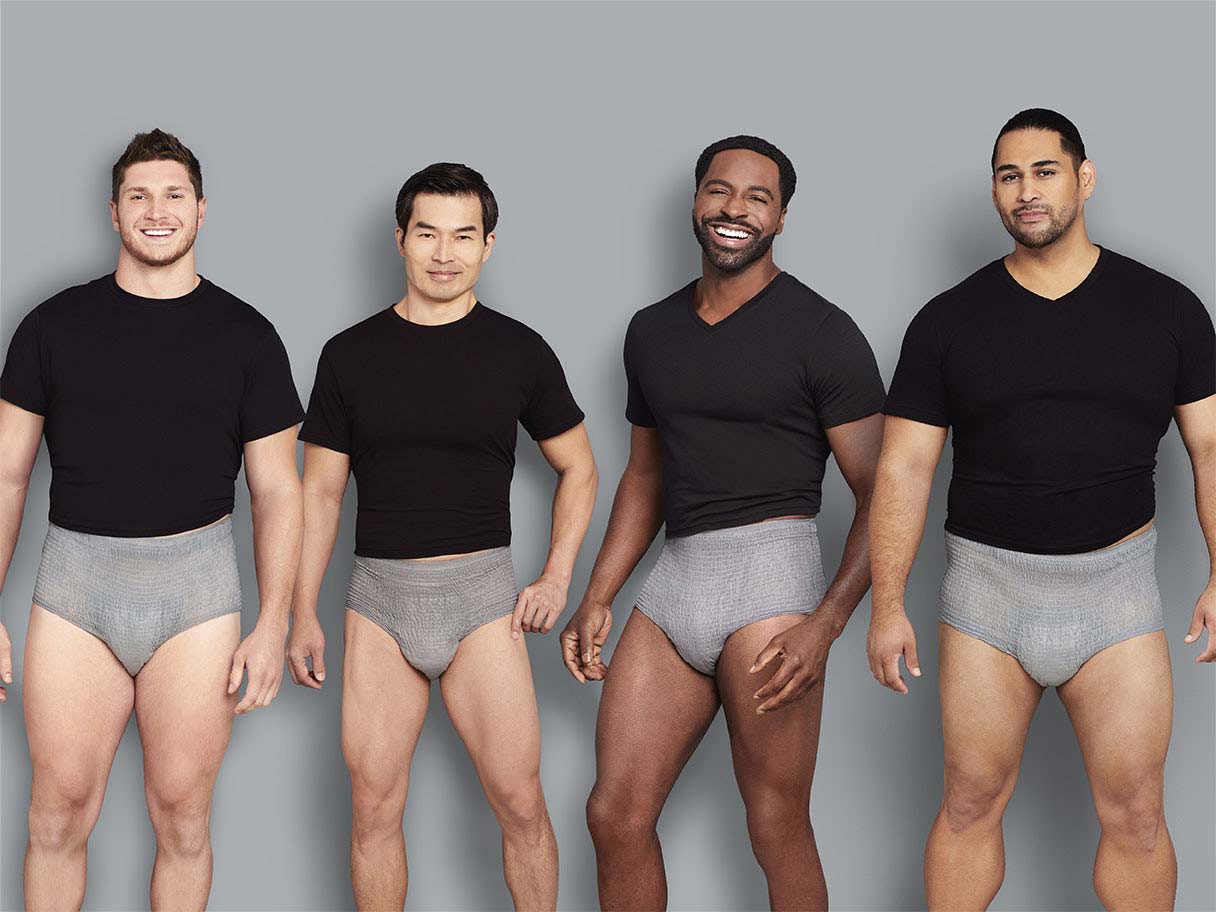Common Myths About Incontinence
Common Myths About Incontinence
There are plenty of myths floating around about incontinence, like incontinence requires major lifestyle changes. Or that it’s an inevitable fact of life, and there’s nothing that can be done about it.
Myths like these and many others on the topic of incontinence are being dispelled every day. Knowing the truths can set you free to enjoy a better quality of life.
Here are five of the most common misconceptions about living with incontinence, along with the truths that can help you maintain a positive outlook.
Myth #1: Everyone will be able to tell that I’m incontinent.
The truth is, thanks to advancements in treatment, protection and even clothing styles, you’re the only one who needs to know.
On the treatment front, symptoms shouldn’t be a constant source of worry or embarrassment. Talk to your physician about effective prescription medications that can help treat the most common forms of incontinence.
For protection, disposable absorbent products continue to make great strides in helping people maintain the utmost discretion. Products are thinner than ever, yet designed to hold more liquid and neutralize odor. And they’re offered in a greater variety of sizes and shapes to make it easier to find your perfect fit.
To find the right product for you, visit the DEPEND® Product Selector.
There’s even help when it comes to daily attire. The clothing you choose to wear can go a long way to minimize the appearance of what’s underneath. Today’s more casual, relaxed fits and styles not only look great, but offer added discretion.
However, if managing your incontinence requires special clothing, many sites offer special incontinence "adaptable-wear" clothing and even washable shoes to help you look stylish while managing your condition (try buckandbuck.com, eversures.com and careapparel.com for a few).
Myth #2: Staying healthy and active will prevent incontinence.
While a balanced diet and exercise are important to overall health and longevity, it’s no guarantee against the occurrence of bladder leakage. Even a recent study of female college gymnasts revealed one in three had occasional leakage problems while exercising—and they were young athletes in peak condition!
There are several factors that can contribute to the development of incontinence, even if you’re in good health. They include:
- Pelvic surgery
- Bladder infections
- Problems with language — putting coherent thoughts together
- Pregnancy or delivery complications
- Overweight by as few as 20 pounds
- Smoking
- Drinking caffeinated beverages
- Taking prescriptions to control blood pressure, depression, insomnia, or to alleviate fluid retention
Myth #3: Incontinence is an inevitable part of aging.
While incontinence is more common as people get older, simply getting older will not cause a leaky bladder or bowel. Instead, injury or illness is the usual cause, not the aging process. In fact, there are almost 36 million Americans over the age of 65, and only one in five has incontinence, according to a recent Medicare report. However, women make up the vast majority of those with incontinence.
Women often experience incontinence due to muscle or nerve damage from childbirth or complications from surgery. Menopause and the drop in estrogen can also trigger bladder control problems. Additionally, chronic coughing, obesity, diabetes, or prescription side effects can all cause incontinence.
Myth #4: Incontinence is an incurable disease.
Incontinence is not a disease. Instead, it’s generally a symptom of other health conditions and it is highly treatable. As with any health concern, treatment works best when intervention begins early. Doctors agree that incontinence can be eliminated in 50% of all cases, improved in an additional 30% of cases, and never has to be a barrier to living a full and active life.
Myth #5: Surgery is the only good option for dealing with incontinence.
Certainly, there are several effective surgical options, but there are many other less invasive treatment strategies that are also successful. Several prescription medications are available, and a few self-help measures can also provide relief.
Performing Kegel exercises can strengthen the muscles that control urination and reduce or sometimes eliminate incontinence. Adopting simple dietary changes, such as reducing caffeine intake and eliminating other foods that irritate the bladder may also help. Even bladder retraining—following a strict schedule of voluntary urination—is often an effective measure.
Get more facts from your physician
Talking to your doctor can help ease your mind about what living with incontinence is really like. A little information combined with the numerous treatment options that are currently available can put you on the path to successful symptom management. With truths and treatment you can significantly reduce or even eliminate incontinence altogether. So you can go out and enjoy the life you want to live.







